Stop Impulse-Buying Plants: A Pro’s Guide to Spring Shrubs That Actually Last
You know the feeling. The first truly warm spring day hits, and you get an uncontrollable urge to make your garden beautiful—right now. So you race to the nearest big-box store, grab whatever carts of colorful flowers are parked out front, and plant them that afternoon. It looks amazing! For about three weeks. Then the flowers fade, and you’re left with a jumble of green things that don’t really go together for the rest of the year. We’ve all been there.
In this article
A garden built on impulse is a garden that rarely lasts. The real goal isn’t just a splash of color in April; it’s about building a solid foundation, what we in the biz call the ‘backbone’ of your garden. This means choosing plants that give you structure, texture, and interest long after the first blooms are gone.
By the way, if you absolutely need that instant color fix, go for it! My advice? Grab a few six-packs of pansies or a pretty pre-made container for your porch. They’re cheap, cheerful, and will scratch that itch. Then, you can take your time to plan the permanent stuff right.
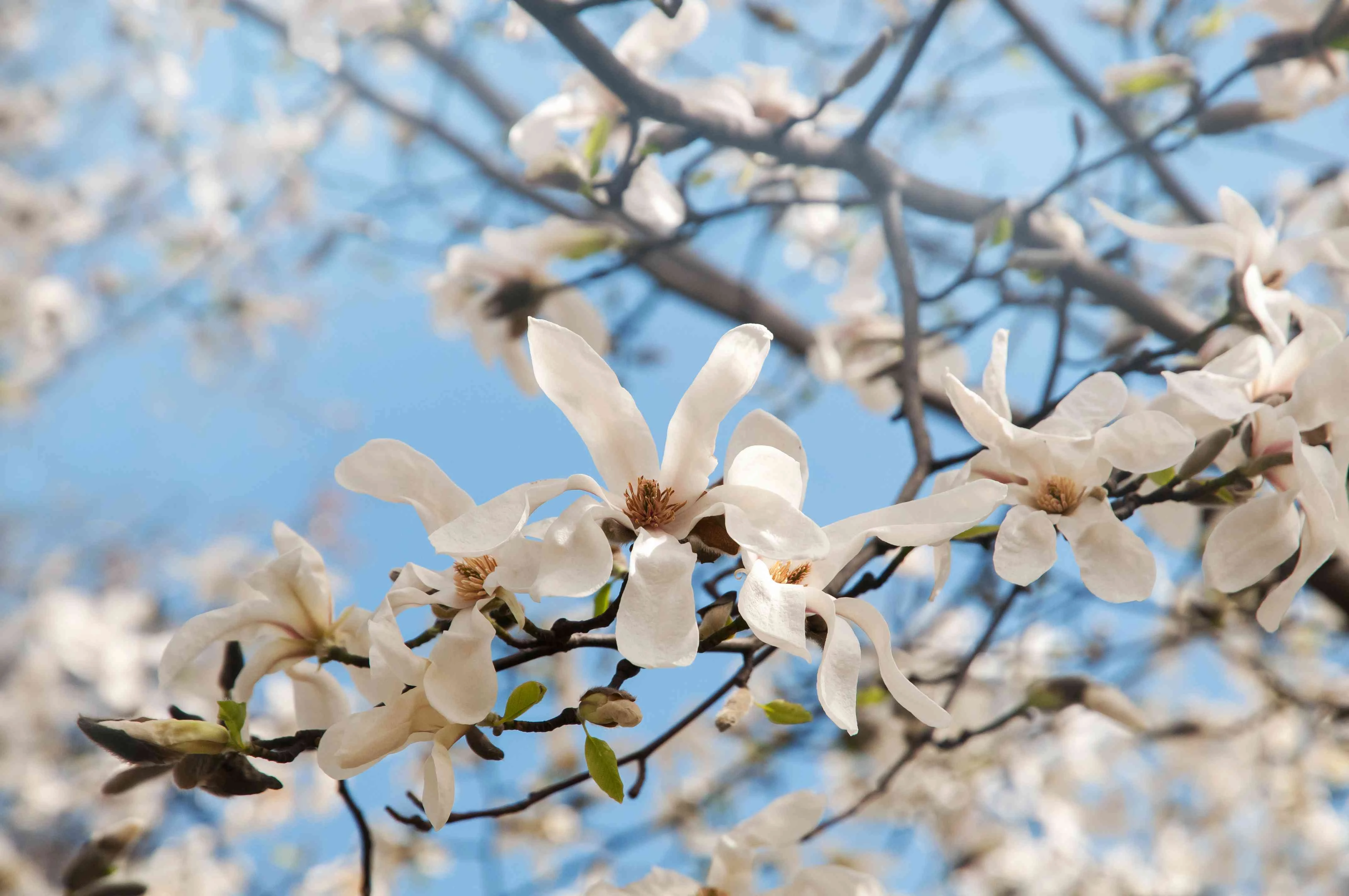
This guide is about making those smart, lasting choices. We’re going to skip the generic lists and dig into how a professional actually selects shrubs. We’ll cover how to match a plant to your yard, plant it for a long and healthy life, and keep it looking great. Let’s build a garden that gets better every single year.
First, a Little Plant Science (The Fun Part, I Swear)
Before you even think about digging, it really helps to understand why these plants do what they do. Honestly, knowing this simple stuff is what separates the frustrated gardeners from the successful ones. It turns a guessing game into a strategy.
Why Plants Need to ‘Chill Out’
Lots of shrubs, especially the ones that drop their leaves in the fall, need a certain amount of cold weather to bloom properly. It’s called their ‘chilling requirement.’ They’re essentially napping all winter, waiting for a signal. Once they’ve had enough cold hours, they’re primed and ready. The next cue—warming soil and longer days—tells them it’s finally safe to pour all their energy into making flowers without a killer frost ruining the show. This is why a random warm day in January doesn’t trick a Forsythia into blooming. It’s still waiting for its alarm clock to go off.
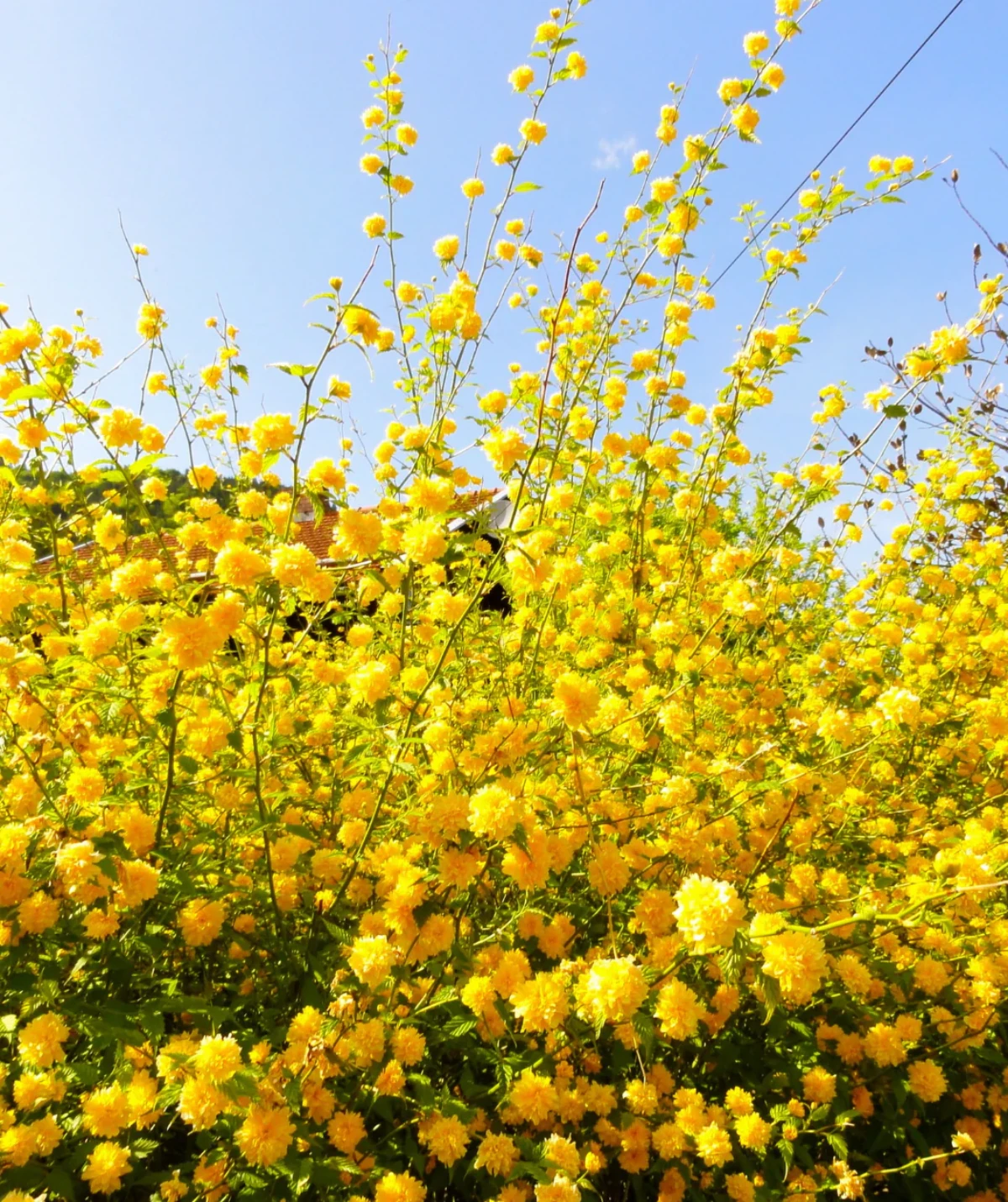
The Truth About ‘Well-Drained Soil’
You see this phrase on every plant tag, but what does it really mean? It’s more than just ‘not a swamp.’ Soil is a mix of sand, silt, clay, and organic stuff. The roots need both water and air to live. Heavy clay soil holds tons of water but has no room for air, which leads to root rot—the number one killer of landscape plants. On the flip side, super sandy soil has plenty of air, but water zips right through it.
Here’s a trick the pros use: a percolation test. Dig a hole about a foot deep and a foot wide. Fill it with water and let it drain completely. Then fill it again and measure how far the water drops in one hour. You’re looking for a sweet spot between 1 and 3 inches. Any less, and you have drainage problems. Any more, and your soil is too dry.
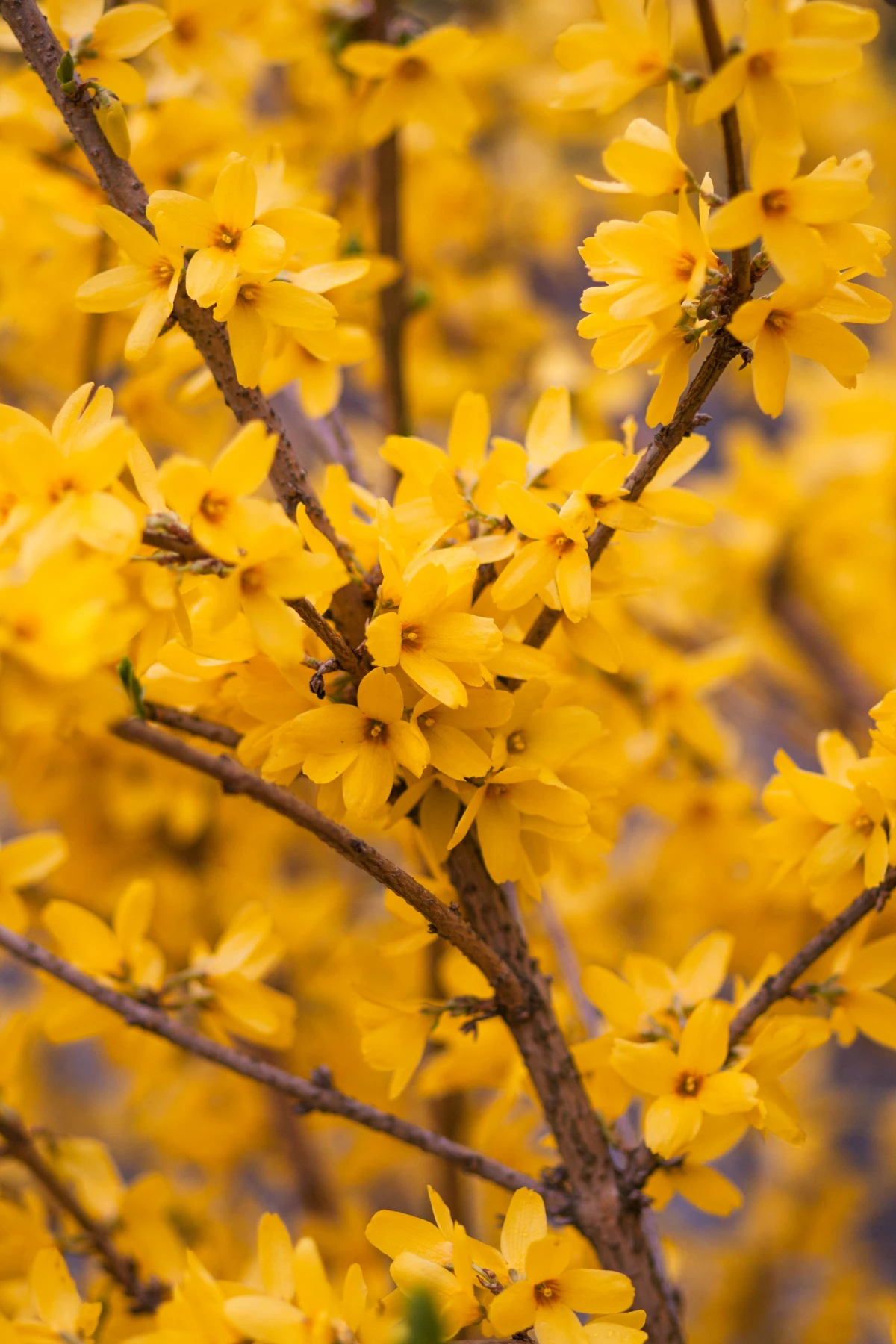
So what do you do if your soil fails the test? Don’t panic! It’s totally fixable.
- For heavy, slow-draining clay: The goal is to break it up. You’ll want to amend the entire planting bed (not just the single hole!) by working in 3-4 inches of compost or other organic matter. This creates air pockets and improves the soil structure.
- For fast-draining sandy soil: The goal is to help it hold water. The solution is actually the same—amend the whole bed with 3-4 inches of compost. The organic matter acts like a sponge, holding moisture for the plant’s roots.
How to Plant a Shrub So It Doesn’t Die
The difference between a plant that thrives and one that just…sits there often comes down to how it was planted. These aren’t secrets; they’re just steps that respect how a plant actually grows.
Look at Your Yard Like a Pro
A yard isn’t just ‘sunny’ or ‘shady.’ It’s a collection of what we call ‘microclimates.’ The spot next to a south-facing brick wall is way hotter and drier than the north side of your house. That narrow gap between your house and the neighbor’s can be a wind tunnel. Before you even buy a plant, spend a day watching. Where is the sun at 9 a.m., noon, and 4 p.m.? Where does rain puddle up? Are there huge tree roots nearby? Answering these questions first saves you a lot of money and heartache.
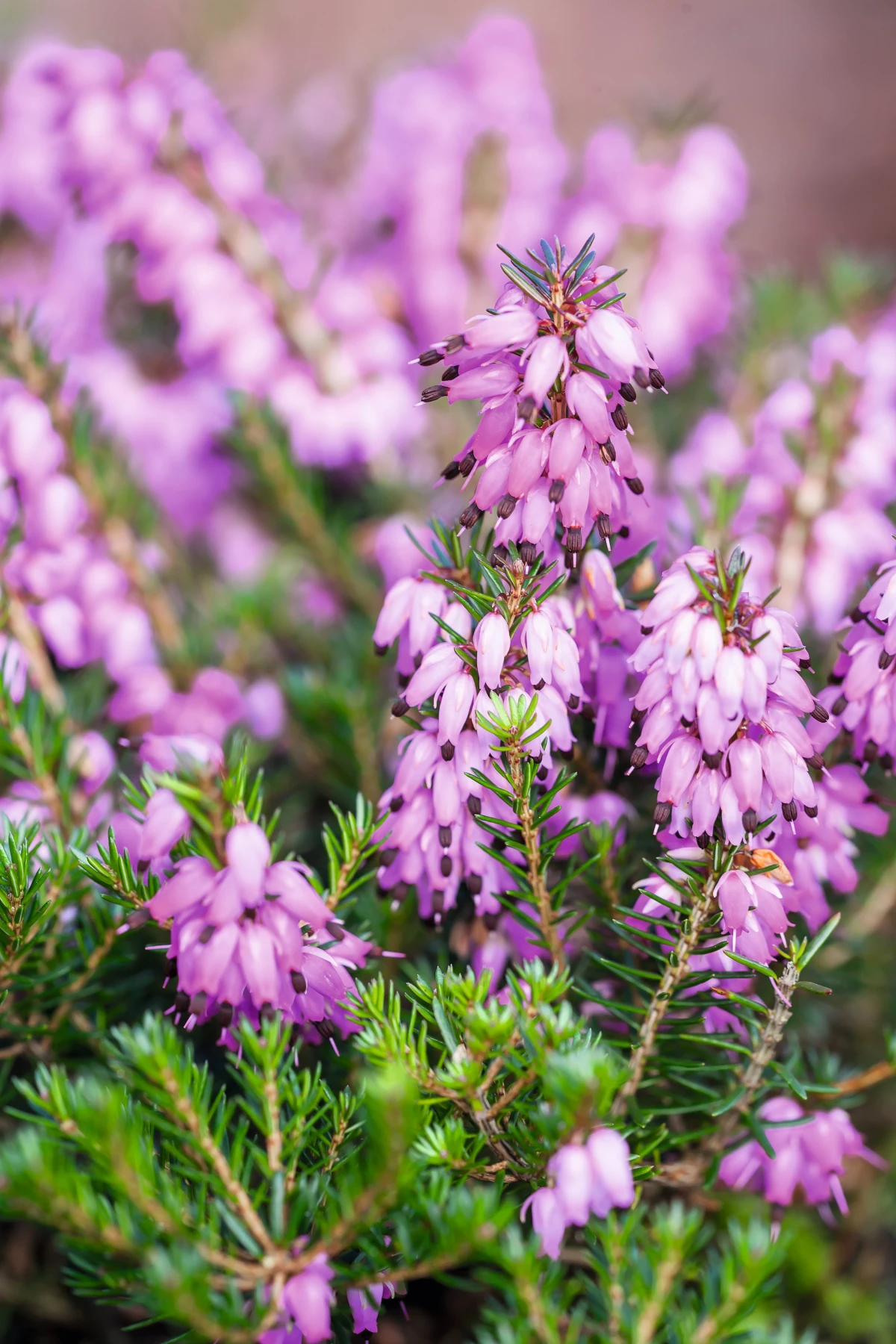
Planting Day: Getting It Right
- The Right Hole: This is the biggest mistake I see. People dig a deep, narrow grave. A shrub’s roots grow OUT, not straight down. So, dig your hole two to three times wider than the pot, but only as deep as the root ball. The top of the root ball should sit level with or even a tiny bit above the surrounding soil. Planting too deep will suffocate the plant. It’s a slow death sentence.
- Prep the Plant: Gently slide the shrub out of its container. Are the roots a tangled, circling mess at the bottom? That’s called ‘root-bound,’ and you have to fix it. Use your fingers to gently tease them apart. If they’re really dense, take a knife and make a few vertical slices down the sides of the root ball. This feels brutal, but it encourages the roots to grow outward instead of continuing to circle and strangle themselves.
- Backfill and Water Smart: Put the plant in the hole and use the soil you originally dug out to fill in around it. Quick tip: Avoid adding too much rich compost right into the planting hole. It can create a ‘pot effect’ where the roots get lazy and never venture out into your native soil. My rule of thumb? I never use more than 25% compost in my backfill mix. Tamp the soil gently, build a little soil moat around the edge to hold water, and then water it deeply.
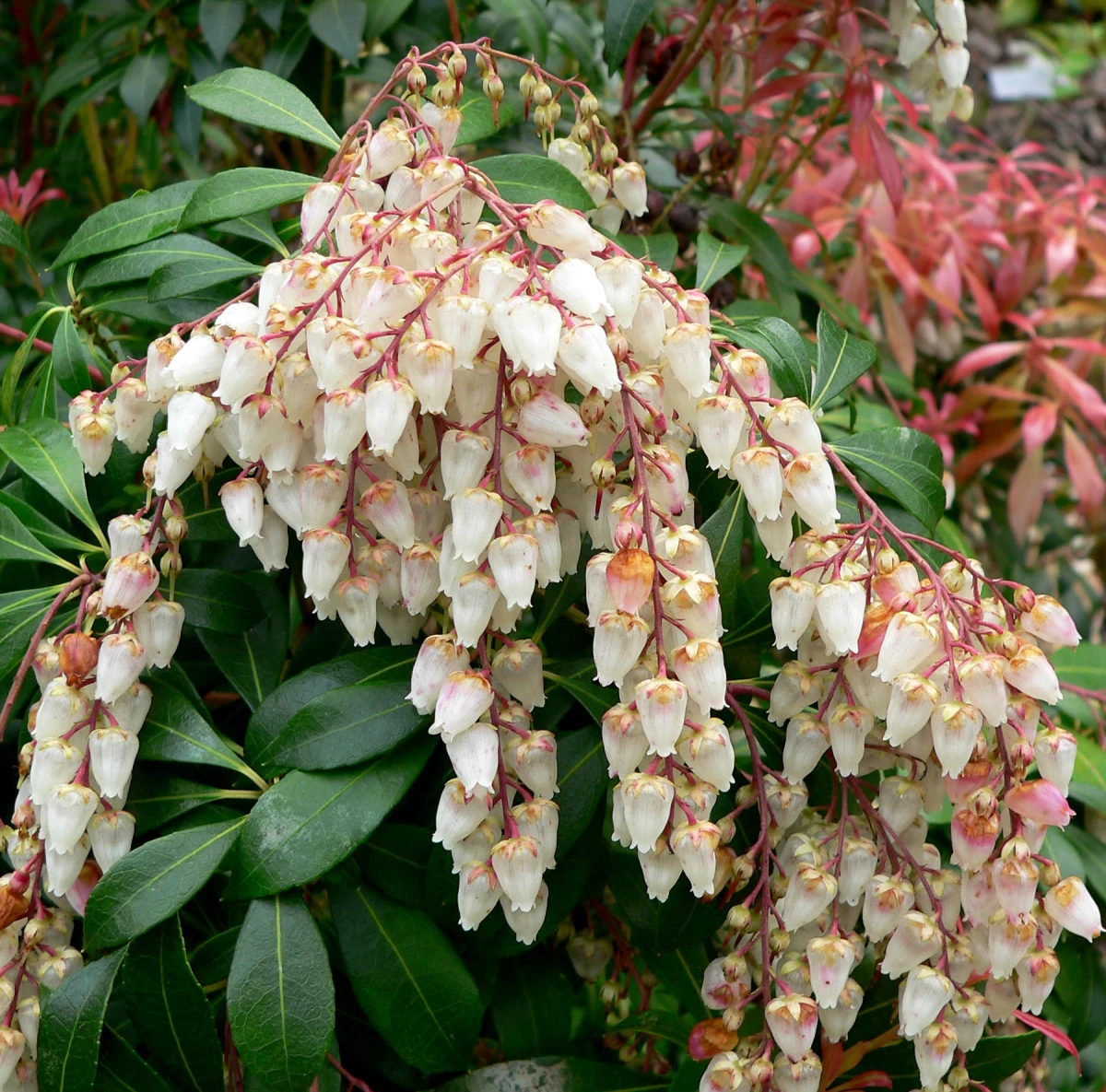
A Pro’s Shortlist of Foundation Shrubs
This isn’t just a list of what’s popular. It’s a look at some workhorse shrubs, complete with their good sides, their bad sides, and where they really shine in a garden plan.
Heads up: You’ll see ‘Hardiness Zones’ mentioned. This is a map that tells you which plants can survive the winter in your area. If you don’t know your zone, just Google ‘USDA Plant Hardiness Zone Map’ and enter your zip code. It’s the first step to choosing the right plant!
1. Witch Hazel (Hamamelis)
This one is special. It’s a true specimen plant, not just a filler. Witch Hazels are one of the very first things to bloom, often when there’s still snow on the ground. The flowers aren’t big and showy but are like tiny, crinkly ribbons in shades of yellow, orange, or red. Their best feature is an incredible spicy fragrance that drifts through the cold air. They have a lovely, open vase shape and great fall color, too.
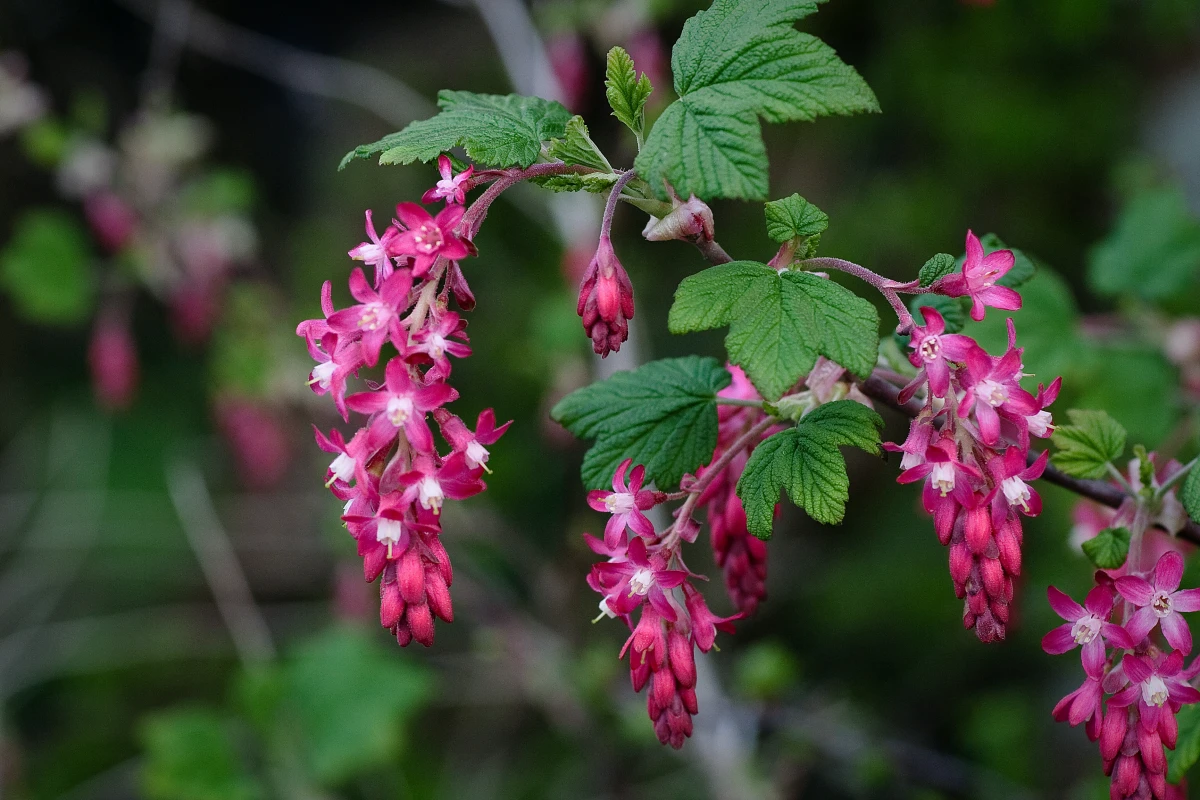
- Best For: Late winter fragrance and unique flowers.
- Mature Size: Can get big, typically 10-15 feet tall and wide.
- Hardiness Zones: 4-8
- Sun Needs: Full sun to part shade.
- Ballpark Price: They’re an investment. Expect to pay between $60 and $150 for a decent-sized plant at a nursery.
- Pro Tip: Plant this near a door or walkway where you’ll actually get to enjoy the scent. From my experience, they get mildew if they’re crammed into a tight, airless spot. Give ’em some breathing room. Once established, they only need watering during long dry spells.
2. Forsythia
Ah, the classic sign that spring has sprung. That blast of yellow is pure joy. But… let’s be honest. It’s a bit of a one-week wonder. After the flowers are gone, you’re left with a fairly boring green shrub. The traditional varieties also get enormous and messy, quickly eating up a small yard.
- Best For: An undeniable, explosive burst of early spring color.
- Mature Size: Older types are monsters at 8-10 feet tall and wide. Look for modern dwarf varieties that stay a manageable 2-4 feet.
- Hardiness Zones: 5-8
- Sun Needs: Full sun for the best blooms.
- Ballpark Price: Very affordable, usually $25 to $50.
- Pro Tip: You MUST prune Forsythia right after it finishes flowering. It blooms on last year’s growth, so if you prune in the fall or winter, you’re cutting off all of next year’s flowers. Every year, cut about one-third of the oldest, thickest stems right down to the ground to keep it healthy and in check. It’s very drought-tolerant once it settles in.
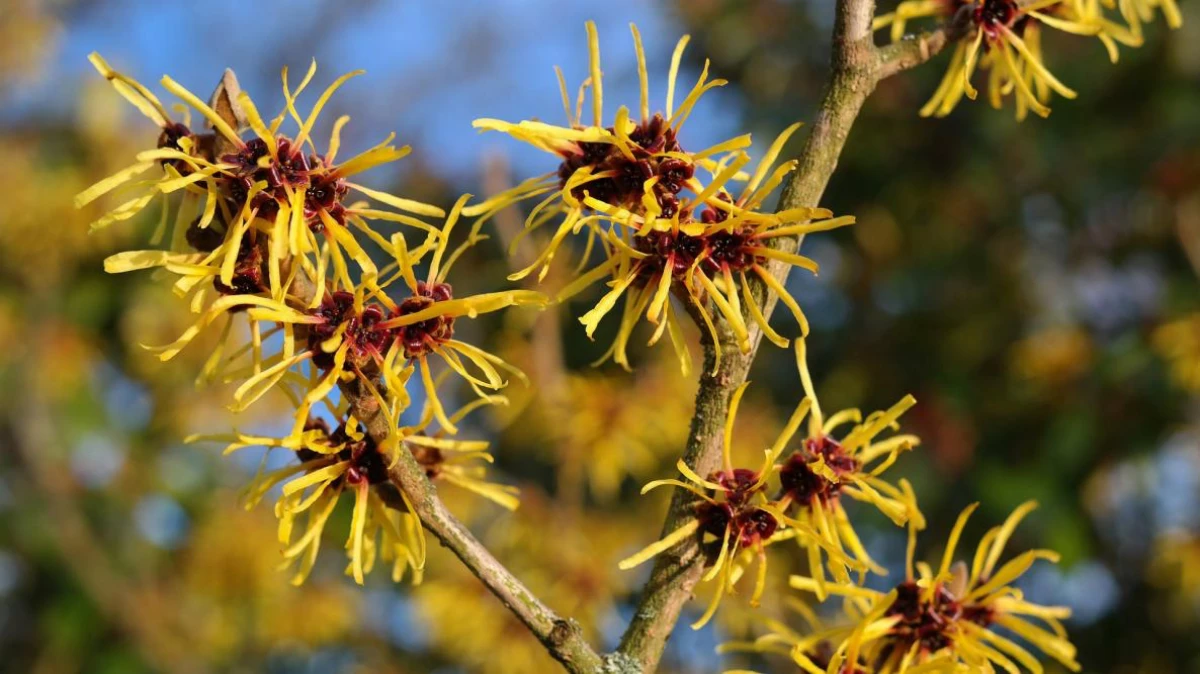
3. Japanese Andromeda (Pieris japonica)
This is a fantastic evergreen that offers something in all four seasons. It sets its flower buds in the fall, and they hang like little strings of pearls all winter. In spring, they open into beautiful, dripping clusters of white or pink bell-shaped flowers. Then, the new leaves emerge in stunning shades of red, bronze, or orange. It’s a total workhorse.
- Best For: True four-season interest (winter buds, spring flowers, colorful new growth).
- Mature Size: Varies, but most common varieties are 4-8 feet tall and wide.
- Hardiness Zones: 5-8
- Sun Needs: Part shade is best. Keep it out of the hot, harsh afternoon sun.
- Ballpark Price: Typically $40 to $80 for a 3-gallon pot.
- Pro Tip: Its one major weakness is lace bug, a pest that attacks when the plant is stressed by too much sun. A spot with morning sun and afternoon shade is perfect. It needs acidic soil and consistent moisture. Oh, and a heads-up for pet owners and parents: all parts of this plant are toxic if eaten.
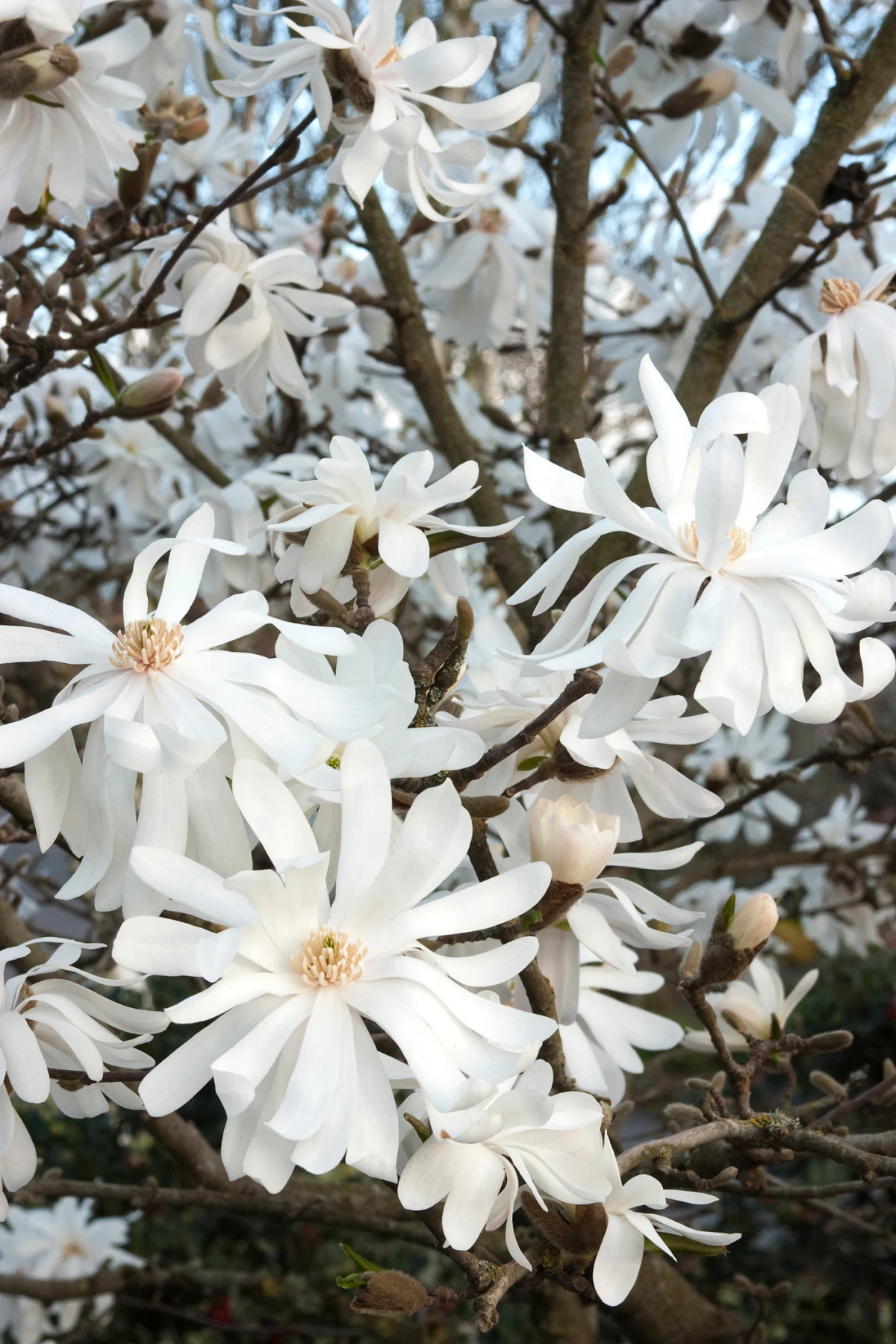
4. Star Magnolia (Magnolia stellata)
This is one of the most elegant spring bloomers. It forms a large shrub or a small tree that gets absolutely covered in delicate, star-shaped white flowers before any leaves appear. It’s a real showstopper and provides great structure in the garden.
- Best For: A stunning, architectural floral display.
- Mature Size: A slow grower, eventually reaching 15-20 feet tall and 10-15 feet wide.
- Hardiness Zones: 4-8
- Sun Needs: Full sun to part shade.
- Ballpark Price: A quality plant will run you $70 to $175 or more.
- Pro Tip: Here’s the heartbreak factor: because it blooms so early, a late frost can turn all those perfect white flowers into brown mush overnight. To avoid this, don’t plant it in a low-lying spot where cold air settles. A lesser-known trick? If you see a frost warning in the forecast after it has started blooming, throw an old bedsheet or a frost blanket over it for the night. It’s a little bit of work, but it has saved the show for many of my clients!
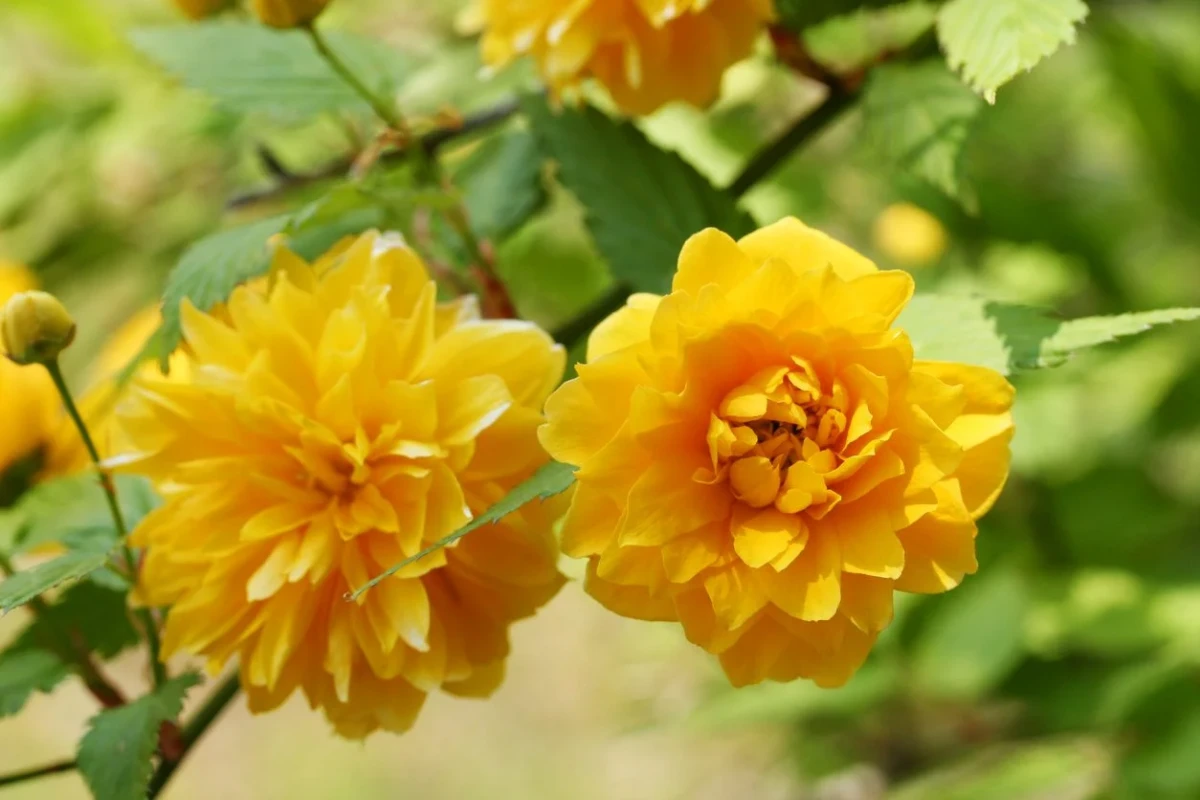
5. Camellia
Camellias are the absolute queens of the garden, especially in warmer climates. They’re evergreens with gorgeous, glossy dark green leaves and flowers so perfect they almost look fake. Some varieties bloom in the fall and early winter, while others are the stars of the late winter and early spring show.
- Best For: Rose-like winter and spring flowers on a lush evergreen backdrop.
- Mature Size: Highly variable, but many popular types grow 6-12 feet tall.
- Hardiness Zones: 7-9 (some hardy varieties can survive in protected spots in Zone 6).
- Sun Needs: Morning sun and afternoon shade is the ideal recipe.
- Ballpark Price: $50 to $120, depending on size and variety.
- Pro Tip: I’ve been called to diagnose ‘sick’ Camellias so many times, only to find they were planted too deep. Their root flare (where the trunk widens to meet the roots) must be visible at the soil line. They also appreciate a layer of mulch to keep their shallow roots cool and moist, but don’t pile it up against the trunk!
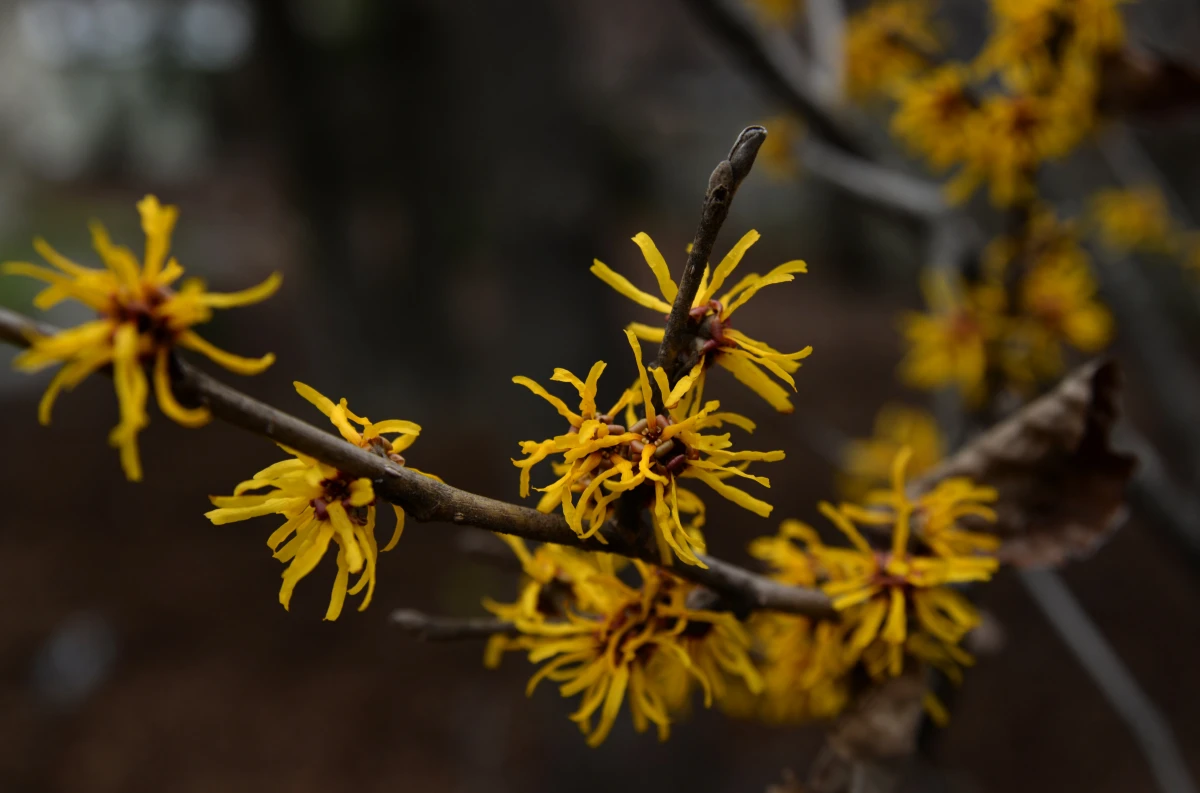
A Final Word on Safety and Shopping
A beautiful garden is a safe garden. Always be mindful of toxicity if you have curious pets or kids. And please, for the love of all that is holy, call 811 before you do any major digging. It’s a free service in the U.S. that marks underground utility lines. Hitting a gas line is a mistake you only make once.
Lastly, where should you buy your plants? You have options. Big-box stores are often cheaper and convenient, but the plant selection can be basic and the staff might not have deep horticultural knowledge. A local, independent nursery is usually my first choice. Yes, you might pay a bit more, but you’re paying for healthier, better-cared-for plants, a much wider selection of unique varieties, and access to employees who are passionate plant experts. They can answer your specific questions and help you avoid costly mistakes. For foundational plants like these, that extra investment is almost always worth it.
Inspirational Gallery with Photos
Don’t just think about spring flowers. A truly great garden offers interest in every season. When choosing your shrub, ask what it will offer in summer, autumn, and winter. Consider the fiery fall color of a Fothergilla, the bright red berries of a Winterberry holly that persist through snow, or the beautiful peeling bark of an Oakleaf Hydrangea that adds texture to the stark winter landscape.
The National Gardening Association reports that a well-landscaped yard can increase a home’s value by 5 to 15 percent.
Those carefully chosen shrubs aren’t just an expense; they’re an investment. Unlike temporary annuals, the permanent structure provided by shrubs contributes directly to your property’s curb appeal and long-term value, paying dividends for years to come.
What about feeding my new shrub?
Hold off on the strong, all-purpose fertilizer for now. A new plant’s first job is to establish a robust root system, not to push out tons of leafy growth. Over-fertilizing can burn delicate new roots. Instead, amend the backfill soil with compost or use a gentle starter fertilizer with beneficial microbes, like Espoma’s Bio-tone Starter Plus, to encourage healthy root development.
A common mistake: Planting too deep. It’s tempting to bury the plant right up to its lowest branches, but this can suffocate the roots. Before backfilling the hole, locate the ‘root flare’—the point where the trunk widens just above the root ball. This flare should sit slightly above the surrounding soil level to ensure proper oxygen and water exchange.
- Less work for you after the first year.
- A garden buzzing with native bees and butterflies.
- Increased resilience to local pests and diseases.
The secret? Planting shrubs native to your region. They are perfectly adapted to your climate and soil, meaning they require less water, less fertilizer, and less fuss once established, all while providing crucial habitat for local wildlife.
Think beyond sight and consider scent. Planting a fragrant shrub near a window, patio, or walkway transforms the experience of your home. The spicy-sweet perfume of a Daphne odora in late winter or the classic heady scent of a ‘Miss Kim’ Lilac on a warm spring evening creates powerful, lasting memories that a purely visual garden can’t match.
Container-Grown: These are plants grown in pots at the nursery. They are easy to transport and can be planted throughout the growing season. The main challenge is to gently tease apart any circling roots at the bottom of the pot before planting to encourage outward growth.
Balled-and-Burlapped (B&B): These are larger, field-grown plants dug up with a soil ball wrapped in burlap. They offer more immediate size but are heavier and best planted in spring or fall. Always remove any wire cages and synthetic burlap before planting.
The trend towards smaller gardens and patio living has led to an explosion of amazing dwarf shrubs. You can get the same stunning floral impact in a fraction of the space. Look for compact varieties like the ‘Little Lime’ Hydrangea from Proven Winners, which is perfect for a large container, or the ‘Lo & Behold’ series of Butterfly Bush that delivers endless summer blooms without taking over your garden bed.
Ready to dig? Make sure you have the right tools on hand to make the job easier and give your new shrub the best start.
- A sharp spade or shovel for clean digging.
- A garden fork to loosen compacted soil at the bottom of the hole.
- Good quality gardening gloves.
- A tarp to place excavated soil on, protecting your lawn.
- Slow-release starter fertilizer or compost.
- Natural mulch like shredded bark or pine straw.










